Introduction: Unveiling the Versatility of Tube Packaging
Tube packaging, in its myriad forms, is an omnipresent feature of modern life, seamlessly integrating into daily routines from personal care to industrial applications. From the morning ritual of dispensing toothpaste to the precise application of pharmaceutical ointments or industrial adhesives, these cylindrical containers play a critical role in product delivery and preservation. Their widespread adoption is not coincidental; it is a testament to a highly engineered design that optimizes product integrity, user convenience, and waste reduction.
At its core, a tube is a collapsible, squeezable package, typically cylindrical or oval in profile, specifically designed for viscous liquids and semi-solid formulations. This fundamental design allows for controlled dispensing by finger pressure, a key attribute that minimizes product exposure to external contaminants and air, thereby extending shelf life. The concept of collapsible packaging originated with early tubes made from tin, zinc, or lead. Over time, continuous innovation in materials and manufacturing processes has led to the sophisticated plastic, aluminum, and laminate tubes prevalent today, each iteration driven by evolving demands for enhanced barrier properties, cost-effectiveness, and superior consumer experience.
This guide serves as a comprehensive, scientifically grounded resource, delving into the intricate world of tube packaging. It aims to provide a deep understanding of the materials, manufacturing processes, cutting-edge innovations, diverse applications, and future trends shaping this dynamic industry. By presenting this information with scientific precision and accessibility, this report is an essential reference for industry professionals, product developers, and engineers navigating the complexities of modern packaging solutions. The pervasive nature of tube packaging is not accidental; it is a direct result of its highly engineered design, which consistently optimizes product delivery and preservation. Its continuous evolution across diverse industries underscores its fundamental utility and remarkable adaptability to changing market demands.
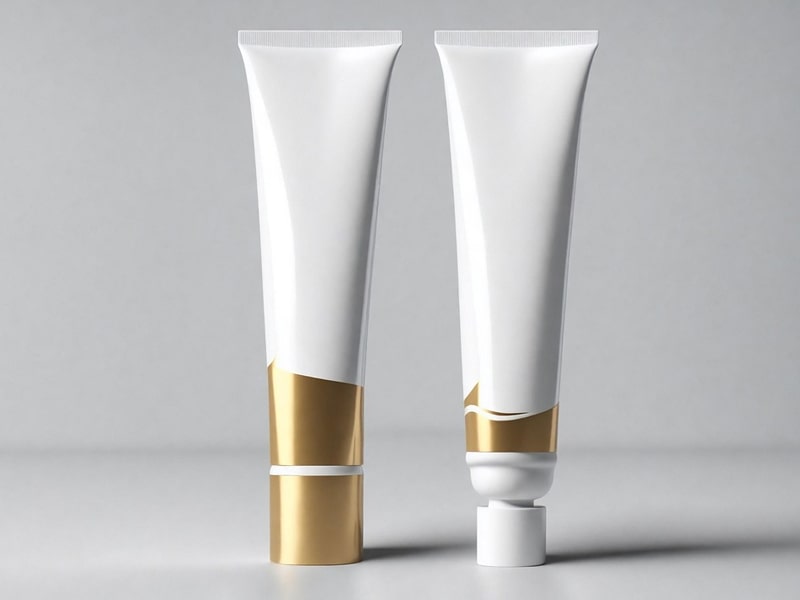
Chapter 1: What Exactly is Tube Packaging? A Foundational Overview
Defining “Tube Packaging”
Tube packaging is characterized by its flexible, squeezable nature, designed specifically for dispensing viscous products. While most commonly round, tubes can also feature oval or other profiles, offering versatility in form. Each tube comprises distinct anatomical components: the body, which varies in length and width depending on product volume; the shoulders; the head, where the dispensing orifice is located; and the orifice itself, which can be shaped in numerous ways, often incorporating specialized plastic nozzles for controlled dispensing. The end opposite the head is hermetically sealed, typically through welding or folding, after the product has been filled.
The defining functional characteristic of tube packaging is its inherent collapsibility and squeezability. This attribute is not merely a design choice but a fundamental engineering decision that directly influences its application and sets it apart from other cylindrical containers. This functionality is crucial for minimizing product waste, as consumers can easily squeeze out nearly every last drop, and for enhancing control during dispensing, ensuring precise application for products ranging from cosmetics to pharmaceuticals.
Distinguishing “Tube Packaging” from “Cylinder Packaging”
While both “tube packaging” and “cylinder packaging” describe containers with a cylindrical form, their fundamental differences lie in their mechanical behavior and intended applications.
Tube Packaging (Collapsible/Flexible): As described above, these containers are inherently flexible and designed to be compressed to dispense viscous contents. Their primary function is controlled delivery and product protection through a structure that collapses as the product is used. This design is optimized for products like creams, gels, and pastes, where air exposure needs to be minimized and precise application is desired.
Cylinder Packaging (Often Rigid): This is a broader category referring to cylindrical containers typically constructed from rigid materials such as paperboard, cardboard, or corrugated cardboard. Unlike collapsible tubes, cylinder packaging is designed to maintain its shape, providing structural protection for a wide array of products. Common materials include kraft paper and various types of cardboard, chosen for their strength, versatility, and often, their eco-friendly attributes.
Applications for rigid cylinder packaging vary widely, from protective mailing tubes for rolled items like posters, blueprints, and artwork 10 to aesthetic and functional packaging for luxury goods such as perfumes and candles, and even certain dry food items like chips, cookies, and premium teas. The benefits of cylinder packaging include strong visual appeal, efficient stackability for storage and transport, superior durability against transit stress, and significant environmental advantages due to their biodegradability and recyclability.
The explicit differentiation between “tube packaging” (implying collapsibility) and “cylinder packaging” (often implying rigidity) adds critical precision to the understanding of packaging terminology. This distinction is crucial for industry professionals and product developers, as the choice between a flexible tube and a rigid cylinder directly impacts product integrity, dispensing functionality, and overall consumer experience. Understanding these nuances is essential for making informed decisions regarding material selection and packaging form.
Chapter 2: The Material Science Behind Modern Tubes: Plastic, Aluminum, Paper, and Laminate
The selection of packaging material is a critical engineering decision, profoundly influencing product integrity, shelf life, consumer experience, cost-effectiveness, and environmental footprint. Each material offers a unique set of properties that make it suitable for specific applications.
Plastic Tube Packaging
Plastic tubes are predominantly manufactured from polyethylene (PE), but also commonly utilize polypropylene (PP), polyethylene terephthalate (PET), polyvinyl chloride (PVC), and polytetrafluoroethylene (PTFE), each contributing distinct properties to the final product.
• Polyethylene (PE): This is a highly popular choice due to its lightweight nature, chemical inertness, and resistance to various chemicals and moisture. It is cost-effective and widely used for cosmetics and food-grade applications.
• Polypropylene (PP): Valued for its good chemical resistance and weldability, PP is suitable for diverse packaging needs.
• Polyvinyl Chloride (PVC): PVC offers versatility and affordability, exhibiting good resistance to abrasion, corrosion, and a broad range of chemicals.
• Polytetrafluoroethylene (PTFE): Known for its exceptional chemical and temperature resistance, PTFE is ideal for handling aggressive chemicals and high temperatures in demanding industrial settings.
Despite common perception, plastics are not entirely impermeable due to their microscopic porous structures. Therefore, effective barrier properties are crucial for extending product shelf life and preventing degradation, such as creams thickening or becoming unusable. High-barrier materials, such as Ethylene-Vinyl Alcohol Copolymer (EVOH), aluminum foil, nylon (PA), and PET, are commonly incorporated into multi-layer plastic tubes to achieve superior protection. EVOH, in particular, is an effective oxygen barrier. However, EVOH is hydrophilic and hygroscopic, meaning its gas barrier performance can be compromised when it absorbs moisture. This necessitates a sophisticated engineering solution: multi-layer technology is employed to encapsulate the EVOH resin layer with strong moisture barrier resins, such as polyolefins, to create a composite material with excellent comprehensive barrier properties. This complex chemical and structural design is vital for achieving optimal product protection, showcasing the advanced material science involved in modern plastic tube manufacturing.
Plastic tubes offer numerous advantages: they are lightweight, highly durable, and generally cost-effective to produce. They provide immense versatility in terms of size, shape, color, and finish. A unique characteristic of plastic tubes is their ability to retain their shape after each squeeze, unlike laminate tubes. They are also highly amenable to decoration, enhancing shelf appeal. However, a primary concern is their environmental impact, particularly their reliance on fossil fuels for production and their persistence in landfills. Many plastic tubes, especially multi-material composites, contribute to pollution through microplastics and can leach toxic additives into products and the environment.
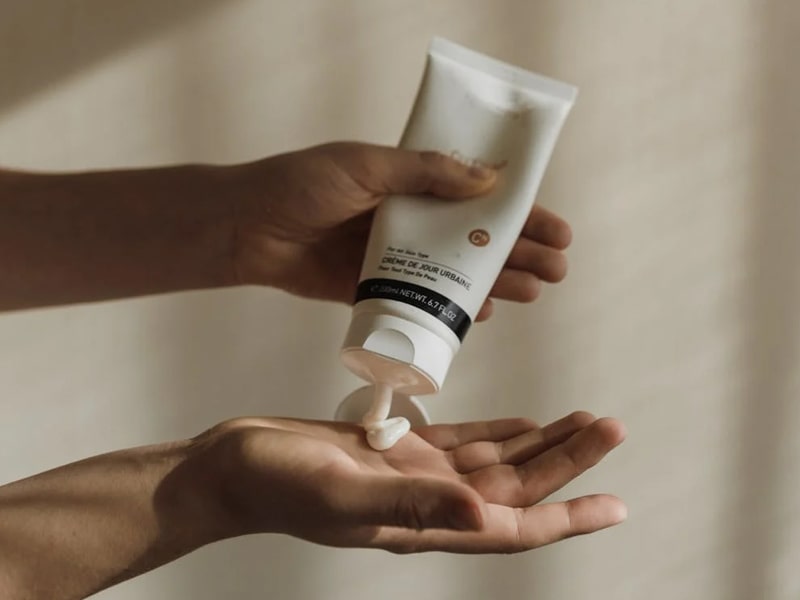
Aluminum Tube Packaging
Aluminum tubes represent a traditional yet highly effective packaging material, inherently collapsible and rigid compared to plastic, though susceptible to denting. They provide a robust, hermetically sealed environment for contents, often nearly germ-free due to the high temperatures involved in their production.
Aluminum offers unparalleled barrier properties against light, oxygen, and moisture, making it exceptionally suitable for highly perishable or sensitive products. A critical feature for aluminum tubes is their internal coating, typically protective lacquers or epoxy-phenol resins. These coatings are essential to prevent any chemical reaction between the aluminum metal and the product, ensuring non-reactivity, non-toxicity, and maintaining the product’s taste and odor, particularly for pharmaceuticals and food. The necessity of these internal coatings, despite aluminum’s excellent inherent barrier properties, highlights a crucial engineering solution to the material’s potential chemical reactivity. This protective layer ensures product safety and integrity, especially for sensitive formulations, and underscores the rigorous quality control required in their manufacturing.
The advantages of aluminum tubes include superior barrier protection, non-reactivity (when coated), high sterility and hygiene, lightweight design, durability, and 100% recyclability, contributing significantly to eco-friendly packaging solutions. However, they generally incur a higher initial production cost compared to plastic tubes. They are also prone to denting and creasing, which can affect their aesthetic appeal. While aluminum is highly recyclable, the internal liners used for pharmaceutical products can sometimes complicate the recycling process, though ongoing innovations are addressing this challenge.
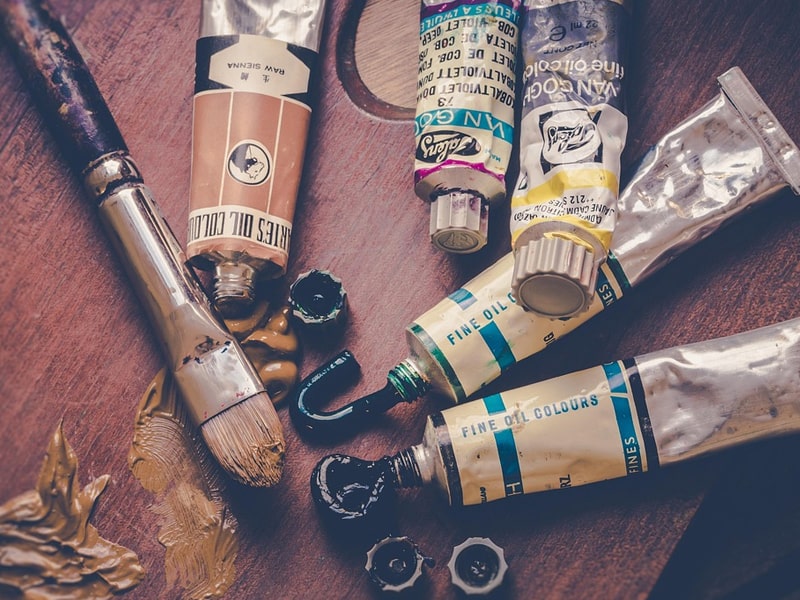
Paper Tube Packaging
The increasing demand for sustainable and eco-friendly packaging alternatives across industries has driven a significant focus on paper tube packaging. These tubes are primarily crafted from renewable resources, such as recycled paperboard or kraft paper, aligning with circular economy principles.
Paper tubes offer several compelling advantages:
• Environmental Profile: They are highly eco-friendly, being renewable, extensively recyclable (up to seven cycles), and biodegradable, decomposing within approximately six weeks when composted.
• Reduced Carbon Footprint: Their production typically requires 25% less energy than plastic production and can result in nearly 40% fewer greenhouse gas emissions when using 100% recycled cardboard. Their lightweight nature also contributes to lower fuel consumption and shipping emissions.
• Brand Appeal: A significant business advantage is enhanced brand appeal, as studies indicate a strong consumer preference for eco-conscious brands, with 55% of consumers favoring paper packaging for its environmental benefits.
• Other Benefits: Paper tubes are inherently odor-free due to their natural composition, surprisingly durable, and can dry without damage when exposed to moisture. When equipped with appropriate food-safe linings, they are chemically inert and safe for food packaging.
Despite their numerous benefits, paper tubes have limitations, particularly regarding moisture barriers. While durable, they are not inherently moisture-proof for all applications. For perishable goods like tea or coffee, specific food-safe linings are crucial to ensure product freshness and integrity. Without proper design or installation, these barriers can potentially trap moisture, leading to issues such as mold or mildew. The “eco-friendly” narrative for paper tubes, while compelling, carries a crucial nuance: their inherent moisture barrier limitations necessitate the use of internal linings for many applications, particularly for viscous liquids or sensitive products. This addition can complicate their “pure” biodegradability or recyclability if the linings are not also sustainable or easily separable. This highlights the inherent trade-offs and complexities in achieving truly sustainable packaging solutions, emphasizing that the entire lifecycle of the packaging, including any necessary barrier components, must be carefully considered.
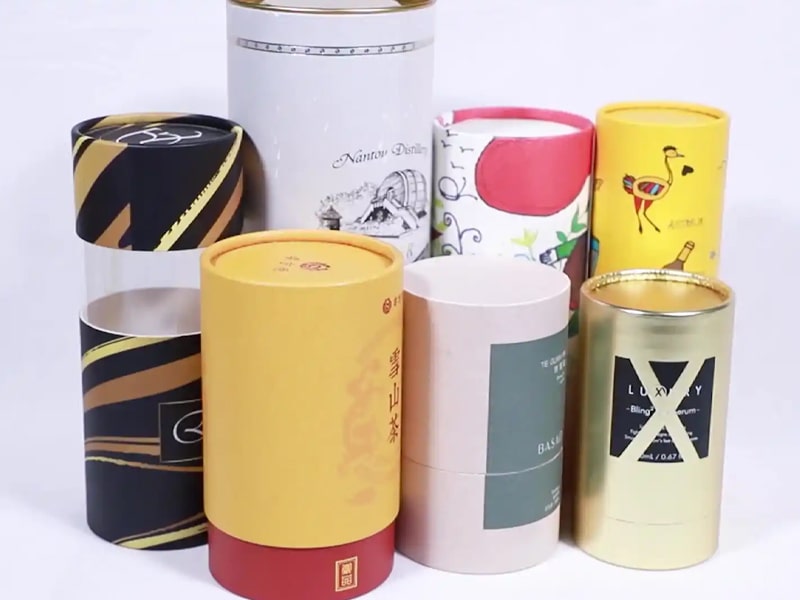
Laminate Tube Packaging
Laminate tubes are engineered by combining multiple layers of different materials, typically a hybrid of plastic and aluminum, to achieve enhanced barrier properties that neither material can provide alone. Common types include Aluminum Barrier Laminate (ABL), which features an aluminum foil layer for superior barrier performance, and Plastic Barrier Laminate (PBL), which utilizes plastic layers for barrier properties. All-Plastic Tubes (APT) represent a newer development, aiming for mono-material recyclability.
Laminate tubes effectively combine the flexibility and excellent printability of plastic with the superior barrier protection against light, oxygen, and moisture offered by aluminum. They often strike a balance between protection and cost, being more affordable to produce than pure aluminum tubes while offering comparable barrier performance. They allow for high-quality printing and are less prone to denting than aluminum.16 While offering a strong balance of properties, laminate tubes may not convey the same premium feel as pure aluminum in certain luxury markets. Historically, their multi-material composition has made recycling complex, though the industry is rapidly innovating towards mono-material laminate solutions to overcome this challenge.
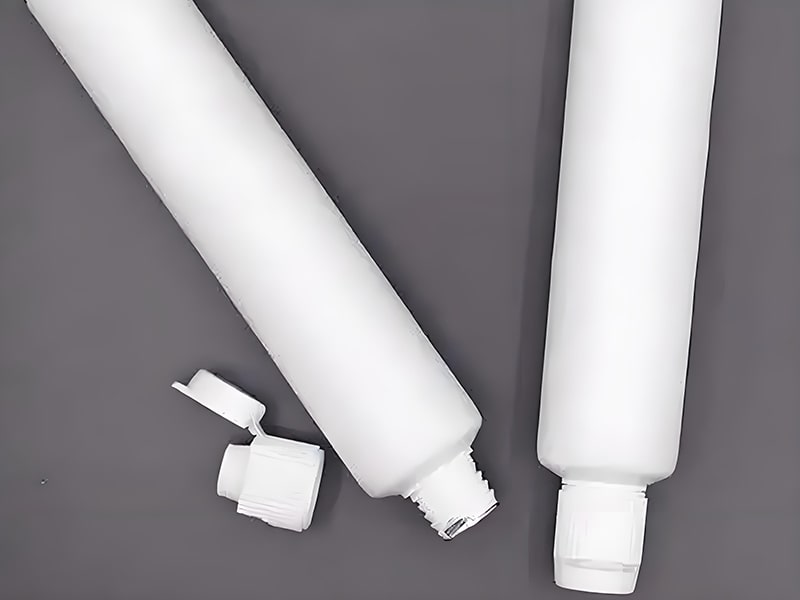
Table 1: Comparative Analysis of Tube Packaging Materials
| Material Type | Key Advantages | Key Disadvantages | Common Applications | Barrier Properties |
| Plastic | Cost-effective, Lightweight, Durable, Retains shape, Highly customizable in design/color, Versatile | Environmental impact (fossil fuels, pollution, microplastics), Chemical compatibility concerns, Limited inherent barrier for sensitive products | Cosmetics (creams, lotions, gels), Food (some foodstuffs), Personal care (toothpaste, hand creams), Industrial (non-active chemicals) | Good (can be enhanced with multi-layers like EVOH) |
| Aluminum | Superior barrier (light, oxygen, moisture), Non-reactive (with coating), High sterility/hygiene, Lightweight, 100% Recyclable | Higher initial production cost, Prone to denting/creasing, Recycling complexity with liners | Pharmaceuticals (ointments, gels), Cosmetics (high-end, sensitive formulations), Food (pastes, condiments), Art supplies (paints), Adhesives | Excellent (total separation from atmosphere) |
| Paper | Eco-friendly (renewable, recyclable, biodegradable), Reduced carbon footprint (lower energy/emissions), Enhanced brand appeal, Odor-free, Durable | Moisture barrier limitations (requires linings for liquids/sensitive products), Linings can complicate recyclability/biodegradability | Specialty food (teas, chocolates), Gift packaging, Eco-conscious brands, Posters, Candles | Requires lining for effective barrier |
| Laminate | Enhanced barrier (combines plastic/aluminum), Cost-effective (vs. pure aluminum), High customizability/printability, Improved durability (vs. single-layer plastic) | May not convey premium feel of pure aluminum, Historical recycling complexity (improving with mono-materials) | Toothpaste, Cosmetics, Pharmaceuticals, Food (products needing strong barrier) | Enhanced (hybrid of materials) |
Chapter 3: From Raw Material to Finished Product: The Manufacturing Journey
The production of tube packaging is a sophisticated blend of material science and precision engineering, leveraging advanced machinery to transform raw materials into functional and aesthetically pleasing containers.
Plastic Tube Manufacturing
The foundational method for creating plastic tubes is the extrusion process. This involves producing a continuous sleeve, which forms the body of the tube, on specialized extrusion machines. This process demands extremely high standards for surface finish, crucial for subsequent decoration, and tight dimensional tolerances to ensure compatibility with automated downstream processes.
For tubes requiring enhanced barrier properties or specific functional layers, co-extrusion is employed. This advanced technique involves simultaneously extruding two or more different polymers through a single die head. This allows for the creation of multi-layered tubing where each layer contributes distinct physical properties, such as a high-barrier EVOH layer protected by outer polyolefin layers. Co-extrusion is the technological enabler for the sophisticated barrier properties observed in plastic tubes, particularly for sensitive cosmetic or food products where oxygen and moisture ingress must be minimized. The ability to combine dissimilar polymers, despite challenges like potential delamination or differences in viscosity and melt temperatures, highlights the advanced engineering and precision machinery required to tailor tube performance precisely to product needs. This capability is vital for manufacturers providing specialized, high-performance packaging solutions.
Following sleeve production, the heading process involves precisely fitting the tube head, including the orifice, onto the sleeve using automated heading machines, forming the complete tube structure. Decoration and branding are then applied using specialized printing techniques, such as silk screen printing, which allows for vibrant and intricate designs directly onto the tube surface.
Aluminum Tube Manufacturing
Aluminum tubes are uniquely produced by the impact extrusion process from a small, round blank of aluminum. This process is fundamentally different from plastic extrusion and requires specialized machinery and engineering expertise. It involves a high-speed ram forcing the aluminum billet (a preheated slug of aluminum) through a die. As the ram strikes, the metal flows backward around the ram and simultaneously forward through the die opening, rapidly creating a seamless, hollow cylindrical shape.
The detailed steps of impact extrusion include preparing and preheating the extrusion die to approximately 450-500°C to ensure even metal flow and maximize die life. The aluminum billet is also preheated before being transferred to the extrusion press. The ram then pushes the billet material into a heated container, causing the aluminum to expand and fill the container’s walls. Pressure is continuously applied, forcing the material through the die openings, where it emerges in its fully-formed shape. After exiting the press, the extrusions are rapidly quenched to cool them, and then stretched to achieve precise straightness and dimensional specifications, correcting any twists that may occur. This distinct, high-pressure manufacturing process is what enables the creation of a seamless aluminum tube, which is crucial for its hermetic seal and unparalleled barrier properties. The reliance on this specialized process underscores that manufacturing techniques are highly material-dependent, requiring tailored solutions and distinct machinery lines.
Designs are typically printed onto the aluminum tubes using the wet-in-wet offset printing method, often employing up to six tones for intricate graphics.
Paper Tube Manufacturing
The paper tube manufacturing process begins with material preparation, where large sheets of recycled cardboard and various lining materials are converted into precise ribbons. These ribbons are then stacked into large rolls, with the desired tube thickness determining the number of ribbons required.
Two primary winding methods define the structural integrity and application of paper tubes:
• Spiral Wound Paper Tubes: In this method, layers of paper are continuously wound at a tilted angle around a central mandrel. These tubes typically have lower crush resistance but are ideal for packaging products such as cosmetics, food items, medicines, and for safely shipping posters and unframed artwork.
• Convolute (Parallel) Wound Paper Tubes: Here, the outer edges of paper sheets are wrapped at a 90-degree angle, rolling one sheet longitudinally upon itself. This method yields tubes with significantly higher crush resistance and dynamic strength, making them suitable for heavy-duty construction processes and industrial applications.
The existence of these two distinct winding methods highlights how manufacturing processes are precisely tailored to achieve specific mechanical properties. This adaptability allows paper tubes to serve a broad range of applications, from delicate consumer goods to robust industrial uses, showcasing the versatility of paper as a packaging material and the specialized machinery required to produce these varied forms.
For adhesion, industrial-grade glue is applied between each paper layer using a cascading gluing system to ensure strong bonding and maintain the tube’s form. Any excess paper and glue are often recycled. After winding and curing, the long paper tube “wounds” are cut into precise, pre-determined sizes. Further customization, including decorative graphics and colored paper ribbons, can then be applied to meet specific branding requirements.
Chapter 4: Beyond the Squeeze: Innovations in Tube Design and Dispensing
Tube packaging has evolved significantly beyond its basic function, incorporating innovations in design and dispensing mechanisms to enhance user experience and product integrity.
Evolution of Closures
Tube closures have progressed from simple screw-on caps to offer enhanced convenience and functionality. Common types include the widely used flip-top caps, as well as disc caps and dome caps, each designed for ease of use and product protection.3 These advancements reflect a continuous effort to improve the interaction between the consumer and the product.
Advanced Dispensing Mechanisms
Beyond basic caps, advanced dispensing mechanisms have transformed how products are delivered:
• Pump Tubes: These tubes are equipped with an integrated pump mechanism, allowing for precise, controlled dispensing of liquid products. They are commonly found in packaging for foundations, serums, and lotions, ensuring hygienic and consistent application.
• Roll-on Tubes: Designed with a small rollerball at the top, roll-on tubes facilitate smooth and even application of products that require a rolling motion, such as perfumes, deodorants, and some skincare treatments.
• Airless Tubes: Airless tubes utilize a sophisticated vacuum-based dispensing system. Unlike traditional pumps with dip tubes, they feature an internal piston that moves upward as the product is dispensed, preventing air from entering the container and maintaining a hermetic seal around the product. This technology offers numerous advantages: it significantly extends the shelf life of sensitive formulations (e.g., those containing Vitamin C or retinol) by preventing oxidation and contamination. It ensures precise dispensing, allowing nearly 99% of the product to be used, thereby reducing waste. Furthermore, airless systems provide a hygienic, touch-free application and contribute to a premium, luxurious user experience.6 Airless tube technology represents a significant functional innovation that directly addresses critical consumer and brand needs: product efficacy, hygiene, and waste reduction. Its rapid growth, making it the fastest-growing segment in cosmetic tube packaging, indicates a premiumization trend within the market where advanced functionality justifies higher costs. This also implies a need for specialized filling and sealing machinery capable of handling these advanced tube types with precision. Airless tubes are rapidly gaining popularity, particularly for sensitive serums, anti-aging treatments, and “clean beauty” formulations where product integrity, hygiene, and efficacy are paramount. They align with the industry’s shift away from preservative-containing formulations.
Custom Tube Packaging
Custom tube packaging is a powerful strategic tool for businesses, extending far beyond mere aesthetics. It enables the creation of a unique brand identity, effectively setting products apart from competitors. It significantly enhances the unboxing experience, making purchases more memorable and fostering repeat business. Custom designs can visibly showcase a brand’s commitment to environmental responsibility, particularly when eco-friendly materials are utilized. Furthermore, robust custom tubes provide excellent protection and durability, ensuring product integrity during transit and reducing returns. They offer immense versatility in design, allowing for various sizes, shapes, finishes, and the integration of custom inserts for multiple items, making them suitable for gift sets or multi-product packages. When produced in bulk, custom tubes can be a cost-effective solution, and their space efficiency optimizes warehouse storage and reduces shipping costs. Finally, they serve as a unique canvas for brand storytelling and a powerful promotional tool for special offers or new launches.
Customization in tube packaging has evolved from a simple aesthetic choice to a strategic business imperative. It integrates branding, sustainability, functionality, and consumer engagement, allowing brands to differentiate themselves and create immersive, memorable experiences. This necessitates highly adaptable and precise manufacturing and printing capabilities from machinery providers. The trend towards personalization allows brands to offer customized messages, names, or unique designs, fostering deeper emotional connections and brand loyalty. Technology plays a crucial role, with brands integrating QR codes, NFC tags, and augmented reality (AR) elements into packaging to offer digital experiences like tutorials, brand stories, or loyalty rewards directly from the product.
Chapter 5: Applications Across Industries: Where Tube Packaging Excels
The inherent versatility and functional advantages of tube packaging have cemented its position as a preferred solution across a vast spectrum of industries, each leveraging its unique attributes to meet specific product and consumer needs.
Cosmetic Tubes & Cosmetic Tube Packaging
Tube packaging is exceptionally prevalent in the beauty and personal care sectors, housing a wide array of products including creams, lotions, gels, serums, makeup (such as foundations and concealers), and the ubiquitous toothpaste. For cosmetics, tubes ensure product safety and hygiene by limiting exposure to air and external contaminants. They facilitate precise and controlled application, minimizing product waste. Furthermore, their design versatility allows for extensive decorative possibilities and branding, crucial for standing out on shelves and enhancing user-friendliness. The cosmetic tube packaging market is significantly influenced by the “clean beauty” movement, which prioritizes hygienic and protective packaging for formulations with clear, safe ingredients. There is also a soaring demand for travel-friendly and trial-sized packaging (up to 50ml capacity), as well as a preference for modern, simple aesthetics that align with a clinical focus on efficacy and purity.
Pharmaceutical & Healthcare
Tube packaging is critical for pharmaceutical and healthcare products, including ointments, gels, topical medications, and ophthalmic products. In this highly regulated industry, superior barrier properties, often achieved with aluminum or laminate tubes, are paramount to ensure product stability, efficacy, and extended shelf life. Sterility, protection from light, air, and moisture, and hygienic dispensing are non-negotiable requirements. The collapsible nature of tubes also aids in precise dosing and minimizing waste of valuable medications. The pharmaceutical segment is projected to make a significant contribution to the global tube packaging market, driven by the rising demand for effective drug delivery systems and the growing trend of personalized medicine.
Food & Beverages
Tube packaging is increasingly utilized in the food industry for items such as sauces, condiments, frosting, pastes (e.g., anchovy paste, tomato concentrate), jams, and spreads. Specialty food products like premium teas and chocolates also leverage paper tubes. This packaging format helps maintain product freshness, prevents spoilage due to air exposure, and allows for controlled and accurate dispensing, which is particularly useful for portion control.1 The appeal of eco-friendly options, especially paper tubes with appropriate food-safe linings, is growing among environmentally conscious consumers. For safety, paper tubes are chemically inert and safe for food packaging. For aluminum tubes, inert internal coatings are crucial to prevent any chemical interaction with edible contents, ensuring absolute safety.
Industrial & Specialty Uses
Beyond consumer goods, tube packaging is essential for various industrial and specialty applications, including adhesives, sealants, caulk, paints, artist’s paints, pigments, lubricants, greases, and cleaners. For these applications, tubes offer precise application, prevent premature drying or deterioration of viscous substances, and provide durable packaging that can withstand demanding storage and usage conditions.
Chapter 6: The Future is Now: Trends Driving Tube Packaging Innovation
The tube packaging industry is undergoing rapid transformation, driven by a confluence of consumer preferences, regulatory pressures, and technological advancements.
Sustainability as a Core Driver
The single most significant trend shaping the tube packaging industry is the escalating demand for sustainable solutions. This is fueled by increasingly environmentally conscious consumers and stringent legislative pressures, such as the European Packaging and Packaging Waste Regulation (PPWR), which aims to limit plastic content in packaging to 5% or less.
Key innovations in sustainable materials and design include:
• Post-Consumer Recycled (PCR) Materials: There is a strong industry shift towards incorporating higher percentages of PCR plastics and recycled paperboard, significantly reducing reliance on virgin raw materials and lowering the carbon footprint of packaging production.
• Biodegradable & Compostable Materials: A growing number of brands are exploring and adopting natural, plant-based alternatives like bamboo, molded fiber, and wood, which decompose without leaving harmful microplastics behind.
• Mono-Material Tubes: This is a pivotal trend aimed at simplifying recycling processes. Mono-material tubes are composed of a single recyclable polymer (e.g., polyethylene for the body, head, and cap), allowing the entire tube to be recycled as a single unit. This design significantly increases recyclability rates and reduces production complexity, addressing both environmental targets and consumer demand for eco-friendly options.
Refillable & Reusable Systems
Complementing the shift to sustainable materials, refillable and reusable packaging systems are gaining significant traction, particularly in the beauty and personal care industries. Brands are adopting refill systems for products like foundations, lipsticks, and skincare jars, reducing single-use plastic and encouraging brand loyalty through reusable components. This approach not only reduces packaging waste and carbon footprint but also aligns with evolving consumer expectations for environmental responsibility.
Intelligent & Functional Designs
Beyond environmental considerations, tube design improvements are enhancing the performance of packaging solutions. Airless tubes, pump dispensers, and innovative flip-top caps are increasing in popularity due to their user-friendliness and convenience. Such intelligent designs contribute to the protection of the product, prevention of wastage, and prolonged shelf life. Manufacturers are also investigating new ways to design collapsible tubes to make them even more portable and to further reduce material waste. These functional innovations are especially effective in the cosmetics, pharmaceutical, and food sectors, where product integrity and precise dispensing are paramount.
Technological Advancements in Manufacturing
Technological innovations in manufacturing processes are enabling tube packaging manufacturers to enhance efficiency, cut costs, and improve product quality. Automation, robotics, and digital printing technology are becoming integral to tube production, leading to quicker production times and more accurate customization. The global tube packaging market is projected to grow significantly, with a Compound Annual Growth Rate (CAGR) of 4.07% from 2025 to 2035, partly driven by these advancements.
Personalization & Customization
Personalization and customization have emerged as major trends in the tube packaging industry, particularly in the cosmetics and personal care sectors. Consumers today crave connection and exclusivity, leading brands to offer limited-edition designs, customized labels, or even interactive packaging that allows users to personalize their product experience. This strategic approach strengthens emotional ties and encourages loyalty. Custom tube designs, constructed from high-quality materials, are especially in demand in the cosmetics and beauty industries, representing a high-growth opportunity where consumers are willing to pay a premium for visually attractive and tailored packaging.
Quality Control and Certifications: Ensuring Product Integrity
Maintaining stringent quality control and adhering to relevant certifications are paramount in tube packaging manufacturing, particularly for sensitive applications like food and pharmaceuticals.
Importance of Quality Control
Manufacturers must establish and adhere to robust quality systems to ensure that their products consistently meet applicable requirements and specifications. These systems, often referred to as Current Good Manufacturing Practices (CGMPs), are designed to prevent contamination, mix-ups, deviations, failures, and errors throughout the manufacturing process. Quality checks are essential at every stage, from inspecting raw materials like paperboard and adhesives to verifying the structural integrity of the finished tube and ensuring consistency across production batches.
Key Certifications
Food-Grade Certifications: These standards ensure that packaging materials are safe for direct contact with food and beverages, preventing harmful substances from leaching into consumables. Common certifications include:
• FDA (Food and Drug Administration): Ensures materials comply with strict guidelines for safe use in food contact applications, confirming they are non-toxic, do not alter taste or quality, and do not promote bacterial growth.
• NSF (National Sanitation Foundation) International: An independent organization that develops standards and provides certifications for products in various industries, including food and beverage, ensuring materials meet rigorous standards for safety, quality, and performance globally.
• 3-A Sanitary Standards: Specifically designed for the food and beverage industry, guaranteeing that equipment and materials meet hygienic design standards, are easy to clean, and resistant to bacteria growth.
Pharmaceutical-Grade Certifications: These certifications establish guidelines for the safety and quality of packaging materials that come into direct contact with medicinal products. They act as a stamp of approval, confirming materials meet rigorous safety and quality standards. Key certifications include:
• United States Pharmacopeia (USP) Class VI: The most stringent classification for plastics, certifying that materials do not cause harmful reactions or long-term effects when in contact with living tissues. It requires passing three biocompatibility tests: acute systemic toxicity, intracutaneous toxicity, and implantation.
• U.S. Food and Drug Administration (FDA) CFR 177.1520: Specifies types of olefin polymers (e.g., polyethylene, polypropylene) safe for food-contact applications, widely applied in the pharmaceutical industry to ensure elastomeric materials meet strict safety standards.
• European Pharmacopoeia (EP) 3.2.9: Similar to USP Class VI, this standard ensures biocompatibility and safety for pharmaceutical components within Europe.
BSE/TSE Free Certification: Ensures materials are free from Bovine Spongiform Encephalopathy (BSE) and Transmissible Spongiform Encephalopathies (TSEs), crucial for materials used in bioprocessing and sterile drug manufacturing.
• ISO 15378: This international standard specifies requirements for manufacturers of primary packaging materials in direct contact with medicinal products. It integrates requirements from Good Manufacturing Practices (GMP) and Quality Management Systems (ISO 9001), providing comprehensive guidance for producing safe, clean, and compliant packaging materials. Implementing ISO 15378 enhances process control, reduces defects, minimizes risks, and demonstrates adherence to the highest quality and safety standards, offering a competitive advantage in the global market.
Life Cycle Assessment (LCA) and Environmental Impact
Understanding LCA
Life Cycle Assessment (LCA) is a comprehensive methodology used to evaluate the environmental impacts of a product throughout its entire life cycle, from raw material extraction, manufacturing, transportation, and usage, to end-of-life disposal. LCA goes beyond simple environmental analysis, diving into the impacts of diverse production processes to identify the most negative aspects and provide data for mitigation. Key elements assessed in an LCA include Greenhouse Gas (GHG) Emissions, Fossil Fuel Use, Water Use, and Mineral Resource Use. By quantifying these factors, businesses gain a clear picture of their products’ environmental footprint, enabling them to identify areas for improvement and implement sustainable practices in packaging design and logistics.
Comparative Environmental Footprint of Materials
The environmental impact of different tube packaging materials is a complex subject, often leading to counter-intuitive findings when rigorously analyzed through LCA. While public perception frequently favors alternatives to plastic, comprehensive LCA studies often reveal that plastics can have a lower environmental impact in many applications. For instance, some analyses indicate that replacing plastic packaging with alternatives could significantly increase packaging weight (by 3.6 times), energy use (by 2.2 times), and carbon dioxide emissions (by 2.7 times). Specifically, PET plastic bottles have been found to be more environmentally advantageous than aluminum cans or glass bottles across various metrics, including greenhouse gas emissions and energy consumption.
However, the environmental performance is highly dependent on the specific application and end-of-life scenarios. For example, recycling packaging materials can significantly reduce CO2 emissions (e.g., 46% for metal, 48% for glass). While paper tubes offer strong environmental benefits in terms of renewability and biodegradability, their need for internal linings to provide moisture barriers for certain products can complicate their end-of-life recyclability or biodegradability, highlighting a trade-off in achieving comprehensive sustainability. Aluminum, despite its energy-intensive primary production, boasts high recyclability, with recycling requiring only 5% of the energy needed for virgin production.
Challenges and Nuances in LCA
Conducting a thorough LCA requires significant detail on materials, products, and supply chains, including raw material sourcing, energy types used in manufacturing and transport, and accurate end-of-life data. Challenges include defining proper system boundaries, relying on average data, and the omission of social implications. It is crucial to recognize that sustainability in packaging is not a binary choice but a complex optimization problem that requires a holistic understanding of the entire product lifecycle.
Conclusion
Tube packaging stands as a cornerstone of modern product delivery, a testament to continuous innovation in material science and engineering. Its defining characteristic—the ability to collapsibly dispense viscous products—is a fundamental design choice that drives its widespread application across diverse industries, from cosmetics and pharmaceuticals to food and industrial chemicals. The evolution from early metal tubes to sophisticated multi-layer plastics, adaptable paper solutions, and hybrid laminates reflects an ongoing pursuit of enhanced product protection, user convenience, and environmental responsibility.
The industry’s trajectory is profoundly shaped by the imperative for sustainability, with a strong shift towards Post-Consumer Recycled (PCR) materials, biodegradable options, and particularly, mono-material tubes that simplify recycling. Concurrently, advanced dispensing mechanisms like airless tubes are gaining prominence, addressing critical needs for product efficacy, hygiene, and waste reduction. Customization, once a mere aesthetic consideration, has become a strategic tool for brand differentiation and consumer engagement, integrating digital technologies to create immersive product experiences.
As the global tube packaging market continues its growth, driven by these innovations and increasing consumer awareness, manufacturers of packaging machinery must remain at the forefront of technological advancement. The ability to produce complex multi-layer plastic tubes, execute precise impact extrusion for aluminum, or offer versatile winding methods for paper tubes becomes paramount. Furthermore, adherence to stringent quality control standards and certifications (such as FDA, USP, ISO, and GMP) is non-negotiable, ensuring product integrity and consumer safety across all applications. The future of tube packaging lies in a delicate balance of functionality, aesthetics, and environmental stewardship, necessitating continuous research, development, and strategic partnerships across the supply chain.
| References: | |
| 1. | Tube Packaging Market Size & Share, Industry Report, 2030 ——Retrieved from:GrandViewResearch |
| 2. | Wikipedia: Collapsible Tube |


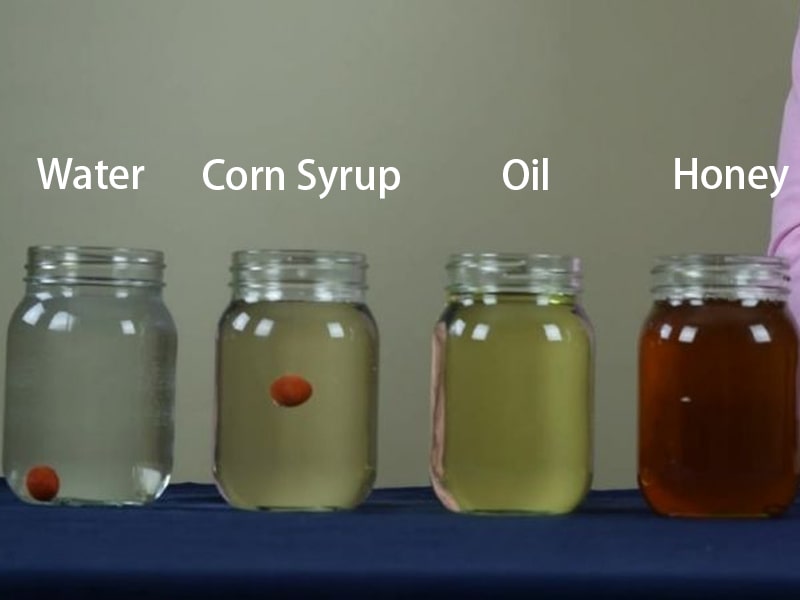
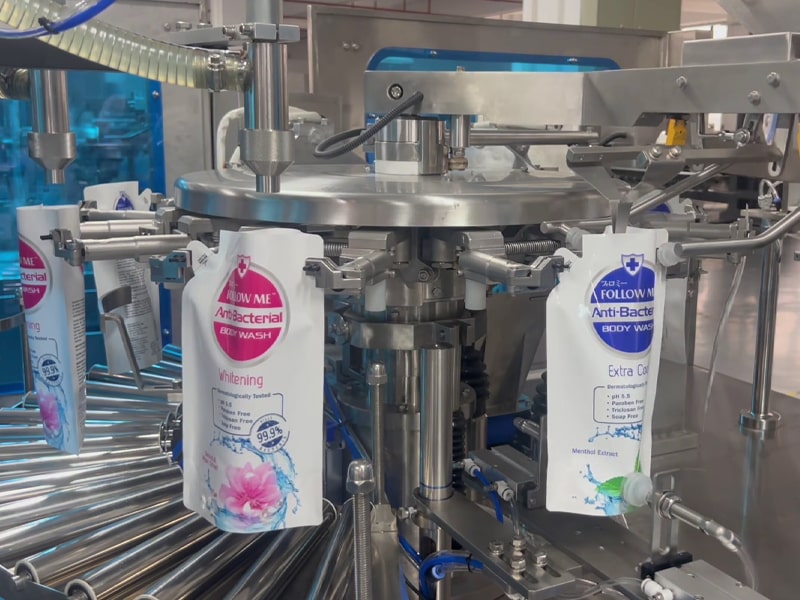


Comments